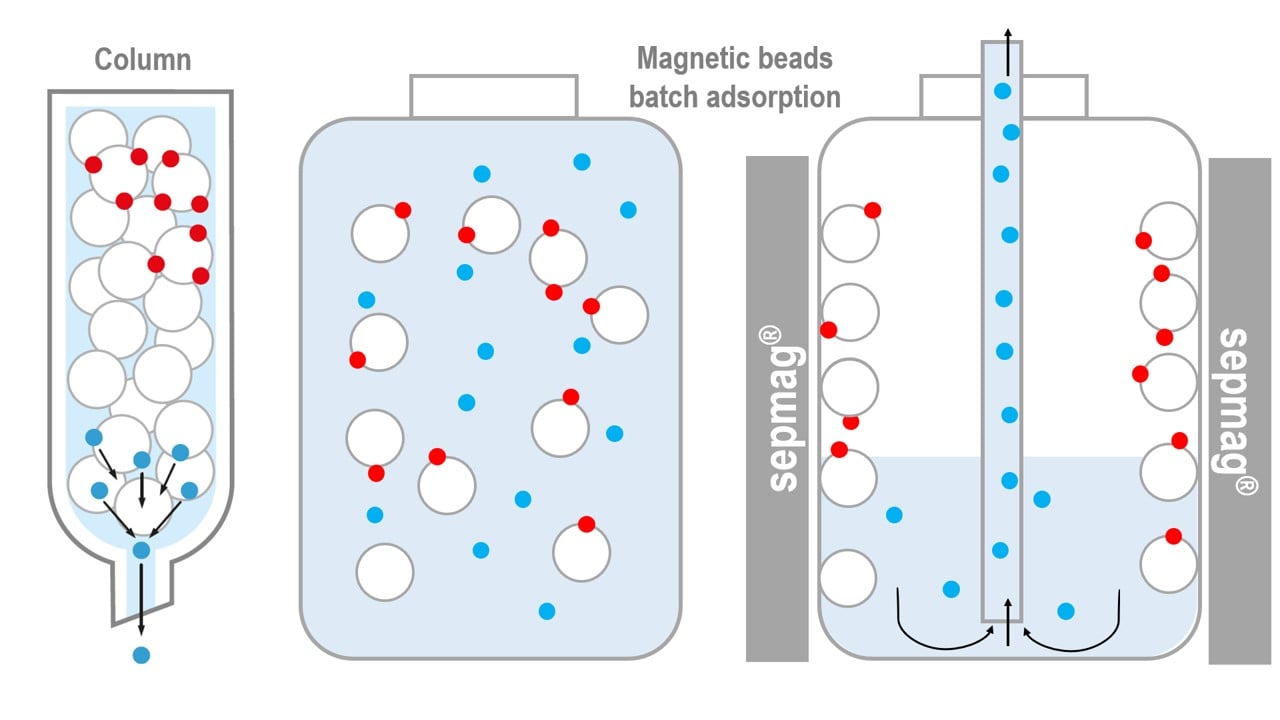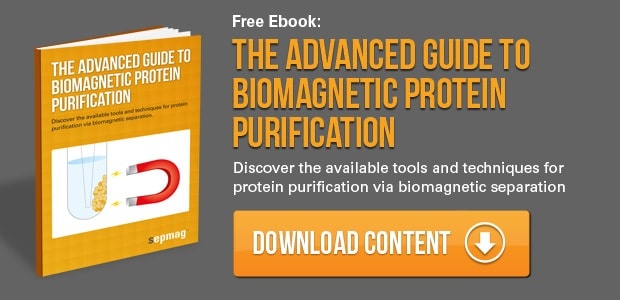Batch adsorption with magnetic beads is considered a mild technique, which is advantageous for the purification of sensitive plasma proteins. Cytiva’s patent application shows excellent results using magnetic beads with suitable ligands for the purification of Factor VIII and von Willebrand Factor in solubilized cryoprecipitate, and Factor IX in cold supernatant. The magnetic separation system, with constant magnetic force, used in these experiments enables the straightforward transferring of the protocols to large-scale volumes.
The Factor VIII and von Willebrand factor (vWF) purification experiments were done with the cryoprecipitate obtained after centrifuging the thawed plasma. The pellets were dissolved in equilibration buffer, at 1/5 of the original plasma volume. The highest Factor VIII yield was obtained using the MagSepharose Q magnetic beads and a sepmag® A200ml: 10-15% higher than in the prepacked Q- Sepharose HP and Capto ImpRes, chromatography columns.
From the same cryoprecipitate, Factor VIII was also purified using batch adsorption with VIII MagSepharose magnetic beads and a sepmag® A200ml. The yield of Factor VIII using this specific ligand was 51% in the eluate fractions. In this case, the yield of vWF was lower than the limit of quantification using ELISA kits as the vWF that is not complexed is not co-purified due to the use of a ligand specific for factor VIII.
Factor IX was purified from the supernatant of the centrifugated plasma. The results using MagSepharose Q magnetic beads and a sepmag® A200ml were compared with the Q Sepharose FF and Capto Q packed columns. The magnetic beads batch adsorption obtains the same yield of factor IX activity in the eluate fraction as the columns, around 80-85%. However, the factor-IXa/factor-IX ratio was the lowest in the eluate fraction of the MagSepharose Q magnetic beads, indicating a low activation of factor IX.
The use of biomagnetic separation systems with a constant magnetic force allows for transferring the protocols to different volumes. Regardless of the batch size, the efficacy and efficiency of magnetic bead separation are maintained. The protein purification protocols based on magnetic beads are not restricted to a small scale. In fact, by using sepmag® systems, the protocols developed at small volumes can be easily scaled-up, as is the case described in the above-mentioned experiment. The yield and purity of the testing volumes can be scaled-up using simple processes of incubation, without the need for complex additional equipment.
These latest advances in magnetic bead-based protein purification make batch adsorption a good alternative for many processes. Combining the high performance of the new beads and the efficiency of the constant magnetic force separation systems, the benefits of this technology are no longer restricted to small volumes.
If you want to learn how sepmag® systems can support your purification process,
contact us at contact@sepmag.eu.
Reference: Method for purification of plasma proteins, Cytiva Bioprocess R&D, PCT/EP 2020/062974





